How do smart light bulbs work and should I buy one?
Wondering how do smart light bulbs work? Our experts explain why you should you get one
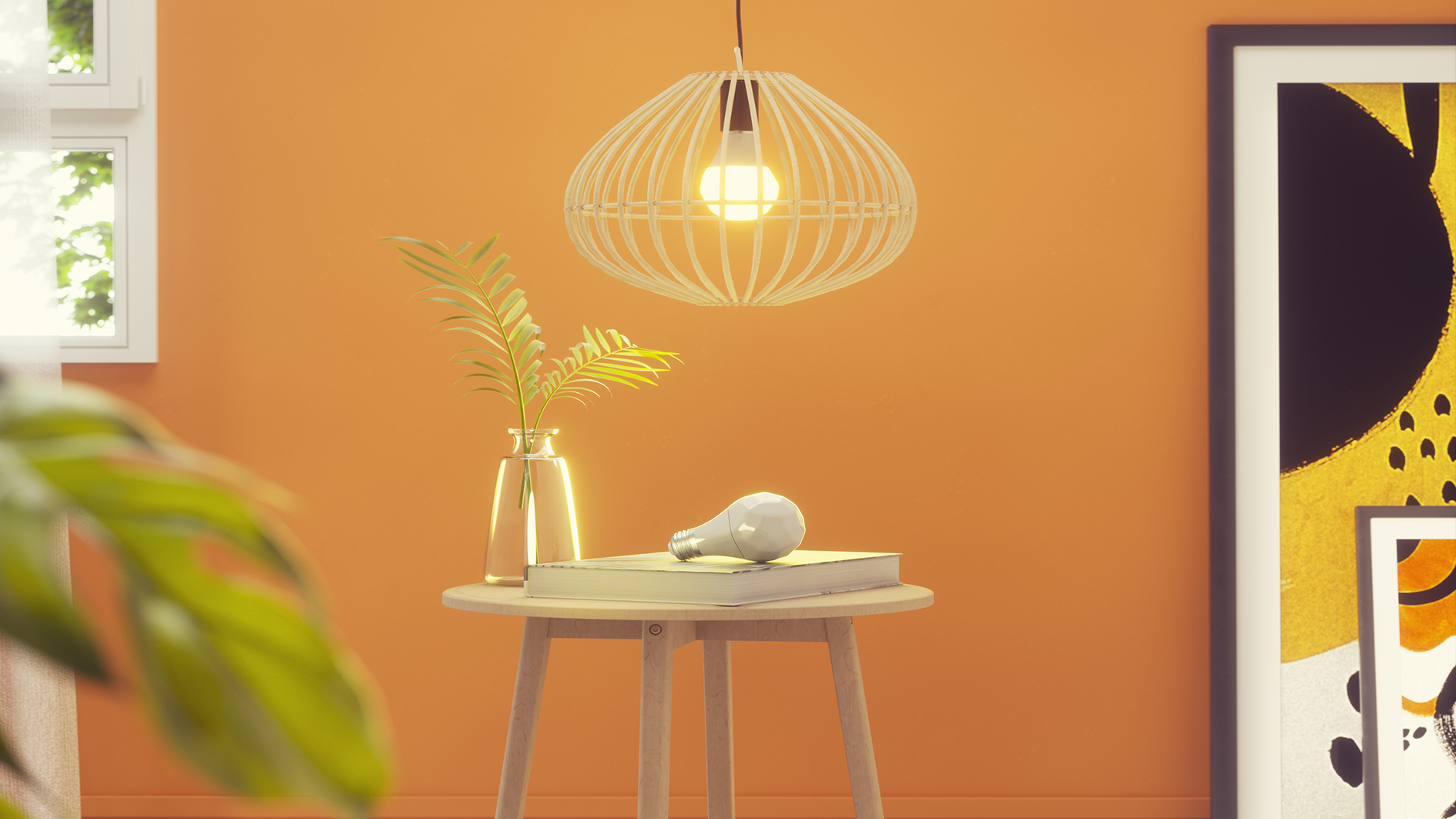
A common question when it comes to embracing tech: how do smart light bulbs work? And then the follow up - should you get one? If you're curious about smart lighting then it probably makes sense to go ahead and give them a try. But before you do, it's worth swotting up on the most important features to consider when choosing smart lighting for your home.
Search for 'smart bulb' on Amazon and you'll be spoilt for choice with options to start to create an automated home. Choose from standard bayonet lamp bulbs, to screw-in versions, vintage filament designs, rainbow color finishes, amber or smoky versions and more. They all claim to be easy to use and convenient, but looking at the small print and knowing what to look for when choosing designs to suit your home - and smartphone - is key to a successful set up.
'What's the difference between WiFi and Bluetooth smart bulbs?, 'How does a smart light bulb work?' and 'Are are smart light bulbs energy saving?' are all questions we found ourselves asking. To shed some light on the topic, we asked the experts at leading smart light bulb companies including 4Lite, LIFX, Philips Hue and Nanoleaf to give us the low down.
'The sale of halogen and incandescent bulbs has been phased out for some time, but the UK has now officially banned sales of them,' says Martin Carroll, director at LIFX. 'It's important to know that while LED alternatives may initially cost more, they will last much longer and are considerably better for the environment. Ultimately, the cost will even over a period of time, with some smart LED lights lasting for up to 10 years. Add to this the benefit of smart features that allow scheduling, voice control and a range of color options and now's a great time to make on of the simplest and most cost-effective home upgrades.'
Lighting can really make or break a home's look and feel, of course, and have an effect on our mood and wellbeing. And the best smart light bulbs can be truly positive.
1. How do smart light bulbs work and should I buy one?
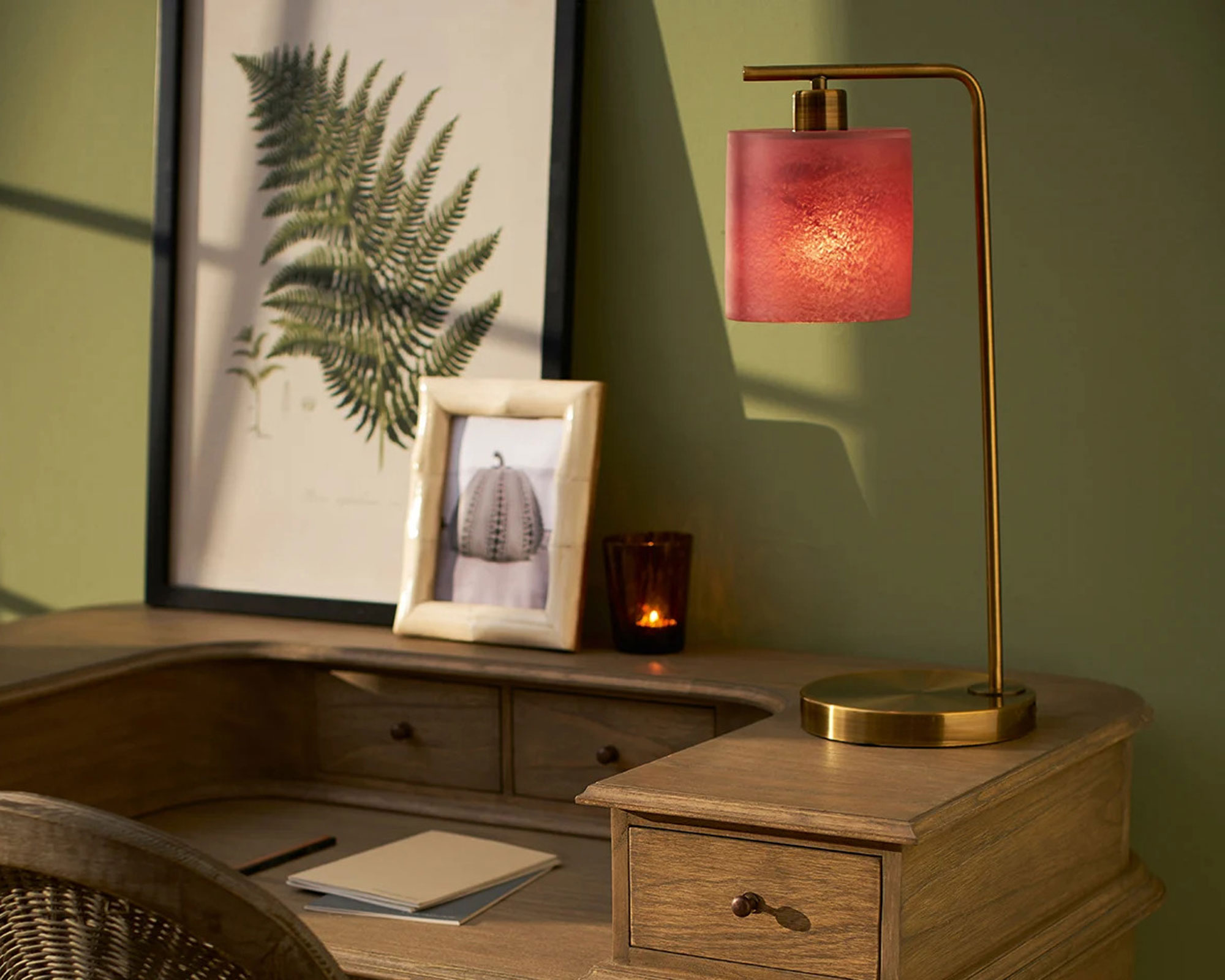
Compared to traditional wall-light switches, smart light bulbs can be controlled wirelessly so give you much more flexibility when you’re at home and don't fancy getting off the sofa to switch the light on or off. They can also be a convenient choice for when you're away from home and want to control your lighting - particularly if you're wondering how to make it look like you're home when you're not.
‘Smart LED bulbs contain software that connects to an app, smart-home assistant or other smart accessory so you can automate your lights or control them remotely,' says Giuliano Ghidini, commercial leader at Signify UKI. 'This eliminates the need for traditional wall switches.'
The Livingetc newsletters are your inside source for what’s shaping interiors now - and what’s next. Discover trend forecasts, smart style ideas, and curated shopping inspiration that brings design to life. Subscribe today and stay ahead of the curve.
‘They are still connected to your home's mains power, but each smart bulb and LED-integrated fixture allows you to control it wirelessly with your smartphone, tablet or smart assistant such as Google Assistant, Amazon Alexa or Apple Home.'
Amazon has a brilliant selection of smart bulbs, broken down as to which devices they're compatible with, here.
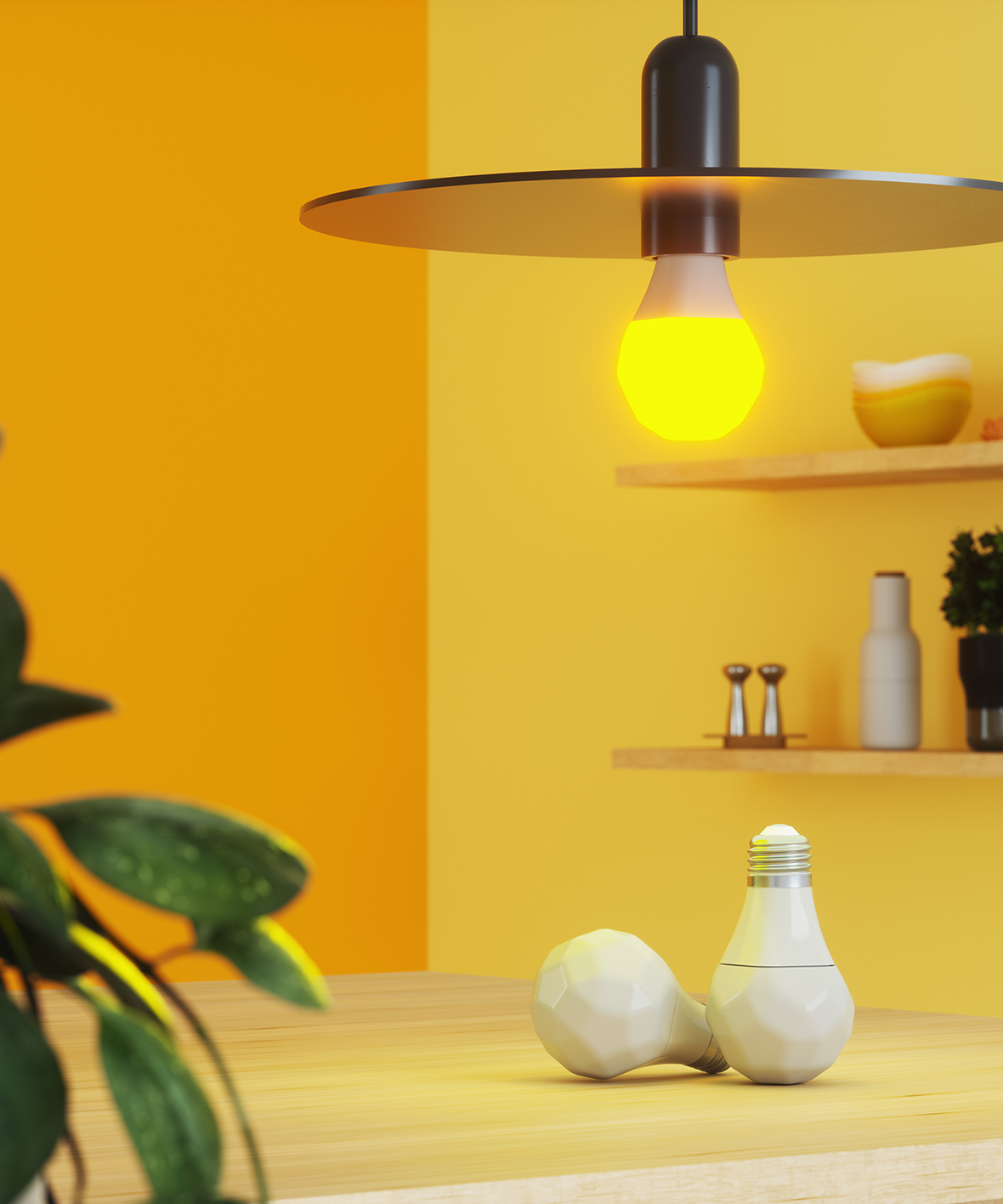
2. What is the difference between WiFi and Bluetooth smart light bulbs?
There are different ways to connect your smart light bulbs including WiFi or Bluetooth. Some companies use their own mesh network and bridge as a backup and you will need to check each manufacturer to see what they offer and what will work best for you.
4Life and LIFX, for example, are two companies that use WiFi to connect the bulb to your smartphone, without the need for any other device such as a ‘bridge’. This means you can control your bulbs in any location with an internet connection. Bear in mind that if you are using WiFi bulbs and the WiFi goes down you won’t be able to turn the lights on remotely. You will still be able to control them at the switch, however.
Bluetooth works by connecting to any smartphone via the bulb’s app, but its range can be limiting and this will affect how much you can control remotely - you won't be able to control the bulbs if you're away from home, for example. Companies that use Bluetooth often use their own protocol to help combat this so you don't have any dropped signals and can access your lighting via an app when you're away from home. Philips Hue, for example, uses a protocol called Zigbee that connects with the Hue bridge. The more products you have connected, the stronger the signal will be.
‘With Hue smart bulbs, all new products are both Bluetooth and Hue bridge compatible,’ says Giuliano Ghidini. ‘The only differences are the amount of rooms you can have and additional features such as scheduling and also the amount of accessories you can have on your system - 50 bulbs and no accessories for Bluetooth and 50 bulbs and up to 12 accessories for Hue via Bridge.'
Browse Amazon's selection of Hue products.
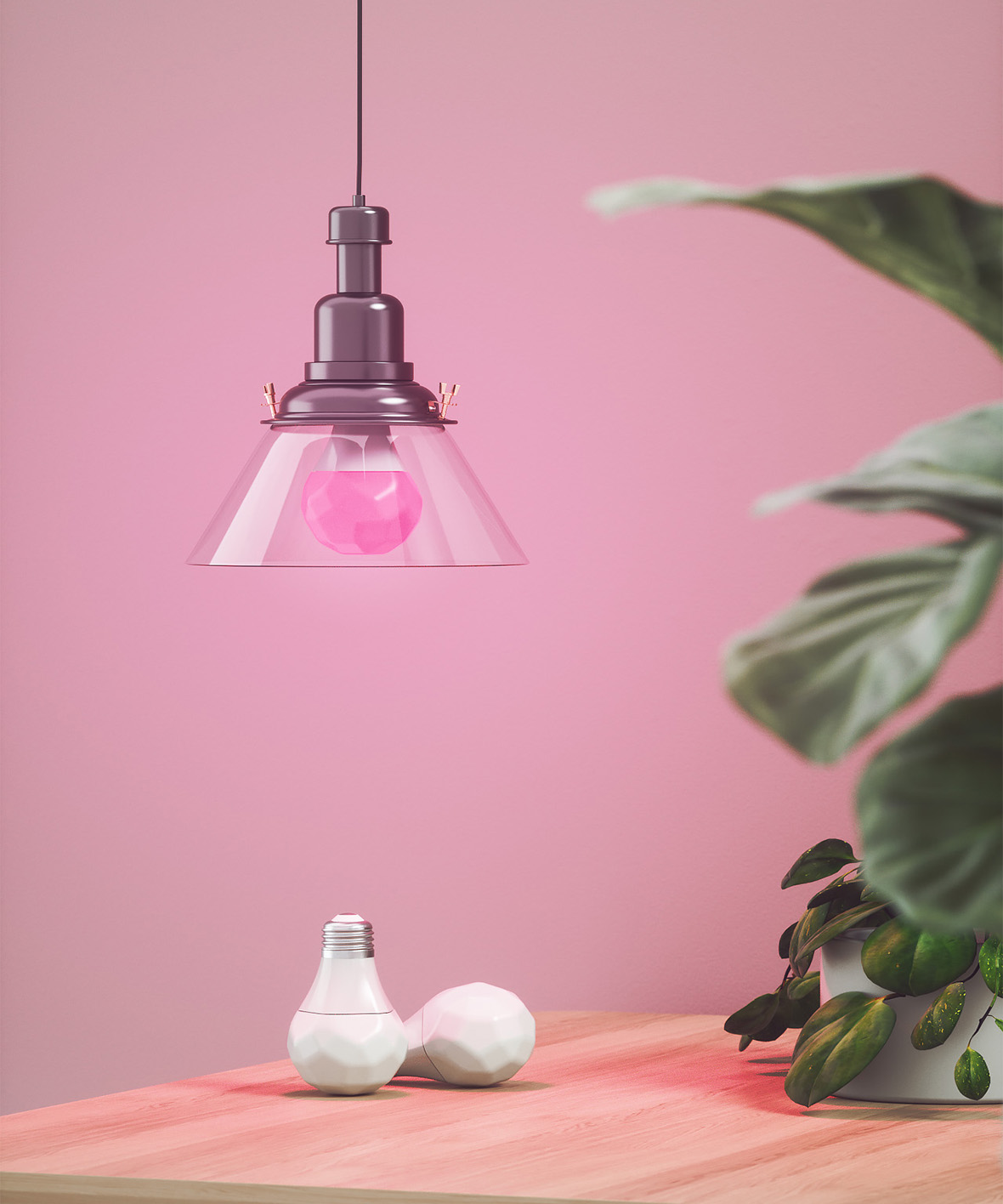
3. How efficient are smart LED light bulbs?
Eco friendly and able to last much longer than standard halogen light bulbs, LED light bulbs can be a wise choice and save you up to 90% more energy compared to a traditional bulb. 'Smart LED bulbs last much longer and generate less heat than incandescent bulbs so use less energy,’ says Giuliano Ghidini. 'As you can control smart LED bulbs via an app, this means you only need to use them when you want and they can be turned off when you accidentally left any on and are away from home.'
NON TOXIC
Another good reason to choose LED is that they are non toxic. ‘Some fluorescent lamps you can buy contain a variety of materials that are dangerous to the environment,' says Rachel Morris, lighting expert at 4Lite. 'But LED lights are completely free from toxic chemicals. 4lite’s LED lights, for example, can help to reduce carbon footprints by up to a third, meaning you are taking a big step towards a greener way of living.’
ENERGY SAVING
It's worth noting that even though you have to leave the wall light-switch on for the smart LED bulb to work, this uses up an insignificant amount of energy. The bulb only really uses electricity when it is switched on. 'If the light or fixture is wired to a switch, the switch needs to remain in the on state – even when the light is turned off in the app,' says Martin Carroll, director at LIFX. 'This allows the light to be responsive to voice commands or changes made in the app. If the power is completely off to the light it won’t have the smarts to wake up. This is the case with any smart device.'
LED BULBS LAST LONGER
LEDs won't abruptly burn out like incandescent and halogen lights can. Instead they simply dim over a period of time. '4lite’s LEDs have an expected lifespan of 30,000-50,000 hours or even longer,' says Rachel Morris. 'This is a huge increase of lifespan in comparison to an incandescent lamps lifespan, which is usually up to 10,000 hours.'
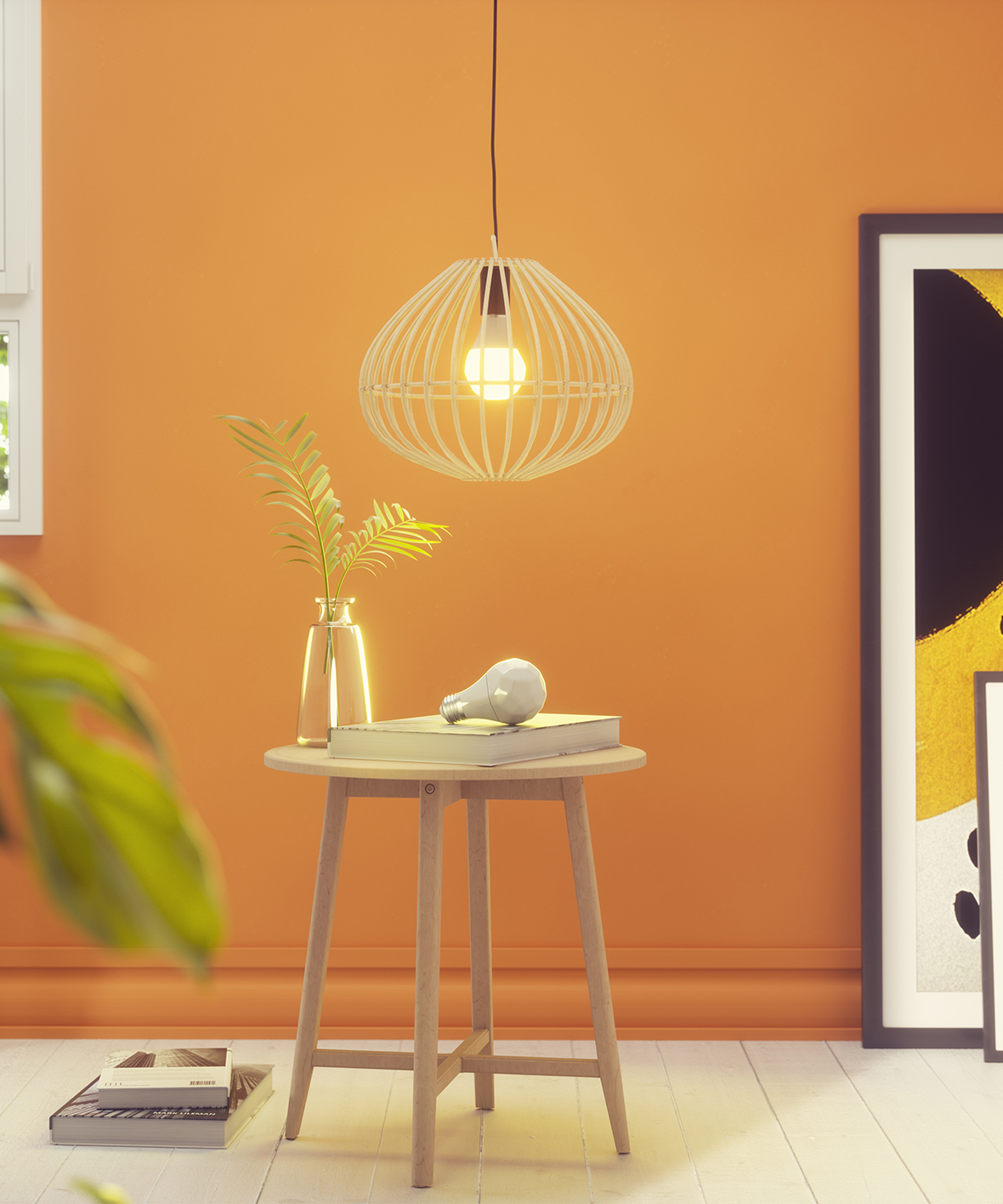
4. What are the benefits of smart lightbulbs?
As well as being efficient and enabling you to control your light bulbs remotely, there are a number of other key benefits to the latest smart LED bulbs. These include:
1. GROUP CONTROL: Having an app or central smart assistant for lighting control means you can choose which rooms or 'zones' to turn the lights on or off in. You can also turn off all lights at the same time, which is very convenient and means you don't have to run around the house checking to see if any lights have been left on.
2. TIMERS ARE GREAT FOR SECURITY: You can programme your light bulbs to come on at certain times of the day, which makes it look like you’re home even when you’re not. Having the ability to control the lights in your home when you're away also means you can check to see if any lights that shouldn't have been left on are turned off.
3. COLOR-CHANGING FEATURES: When it comes to enhancing the aesthetics in a room, smart light bulbs really come into their own. You can choose from a range of rainbow colors, dim the lights and switch colors as your mood suits.
‘If you buy a color-changing bulb, you can change the color of the room using your smartphone,' says Rachel Morris. ‘You can also use the app to control the brightness of your lighting – be it to get bright task lighting for reading, or to create something atmospheric for when you’re watching a movie.’
4. SAFETY: Choosing LED is a much safer option than traditional bulbs. 'LED lamps’ biggest benefit is the enhanced safety it presents as LEDs generate virtually no heat and are cool to the touch,' says Rachel Morris. 'This means they can be left for hours without consequence if touched. In contracts, incandescent lighting expels 90% of the energy it consumes via heat, making them incredibly hot to the touch.'
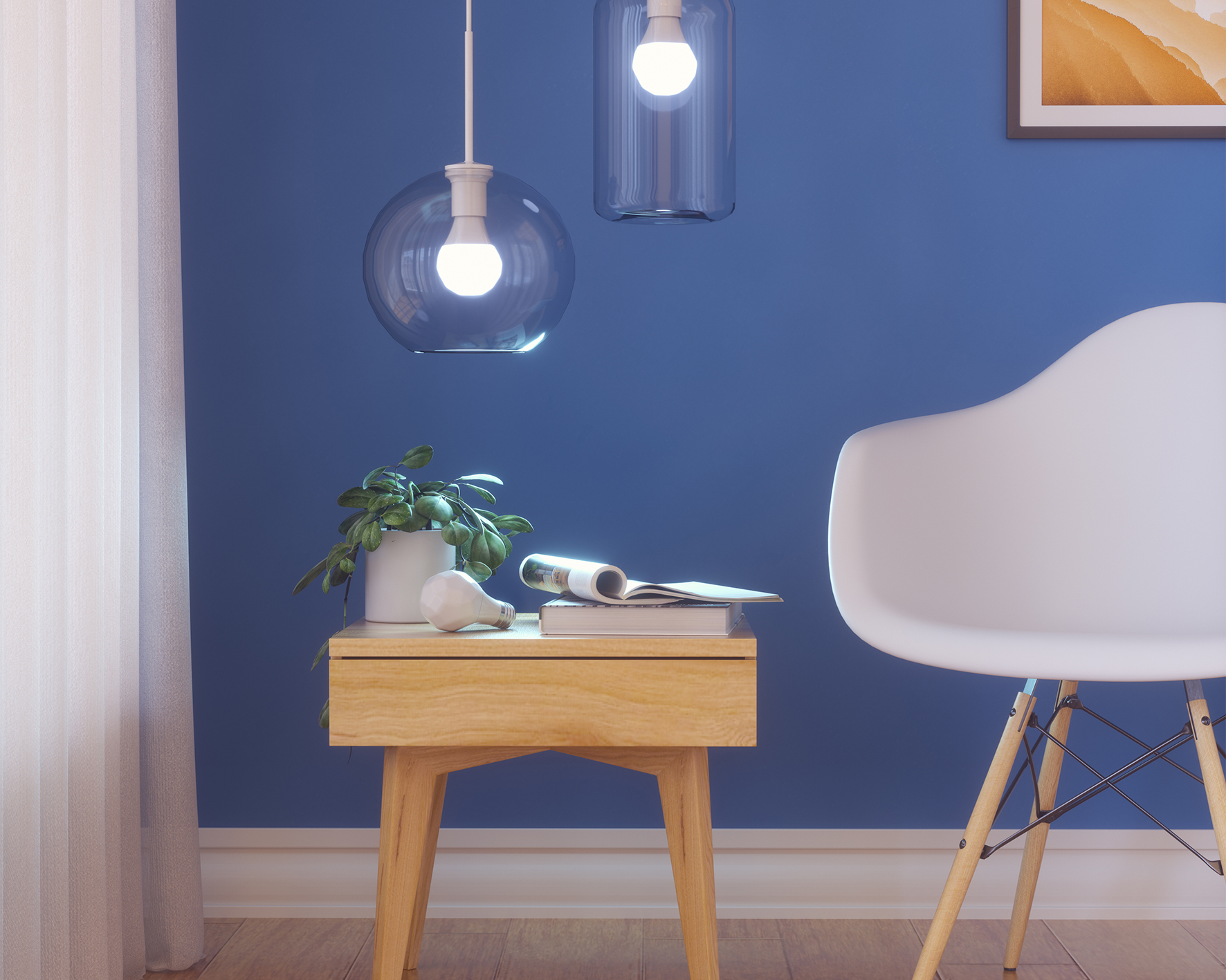
5. Do smart bulbs work in any lamp and with any light switch?
The best thing about smart bulbs it that it's simply a matter of inserting them, pairing them over your network and you're good to go. You can find designs to suit all lamp types including B22 (bayonet), E27 (screw fitting), E14 (small screw fitting) and GU10 (downlight fitting).
Also look out for light 'strips', which work on the same principle, but can be used to highlight fixtures and fittings such as a kitchen island or around a mirror.

6. Which smart bulb should I buy?
There are such a wide range of smart bulbs to choose from online depending on your preference, but here are a few of the latest designs that have caught our eye:
1. We love the 4Lite range of filament-style bulbs, which add vintage flair to your high-tech set up. The LED Smart ST64 Filament Bulb in a sultry Amber finish, for example, can be control via the WiZ app and voice-controlled smart devices including Google, Alexa, Siri and Samsung Smart Things. From £14.49.
2. The Philips Hue starter kit includes two smart bulbs with soft white light and the Hue Bridge, for £69.99. Using the Hue Bridge you’ll be able to access your light controls on your smartphone when you’re away from home. Read more on how lighting can help home security in our feature on how to make it look like you're home, when you're not here.
3. LIFX sells a range of WiFi smart bulbs, but something that caught our eye in particular is the LIFX Clean bulb, priced at £69.99. This is a safe to use antibacterial smart light that uses HEV light to eliminate bacteria in the home.
4. Nanoleaf Essentials bluetooth smart bulbs are great value costing from £17.99. They are controllable with voice assistant or the Nanoleaf app. With a built-in Circadian Lighting feature, they can adjust the color temperature of the bulb throughout the day to complement natural daylight. 'One thing we have incorporated into our products is Thread, which is a mesh network that allows enabled devices to speak the same language,' says Annika Beck, marketing director EMEA at Nanoleaf. 'Stepping up from Bluetooth to this upgraded technology means no more dropped connections and instant control, all with one compatible border router such as Apple HomePod mini or Apple TV 4K.'
One of the UK's most respected tech and smart homes writers, Emily Peck also covers everything from interiors style to decorating trends. She is a contributor to Wired UK, and has also had a column in House Beautiful. She has written for publications such as Grand Designs, Stylist, Shortlist, Woman&Home, BBC, Ideal Home and House & Garden. She was once the Features Editor of Ideal Home.